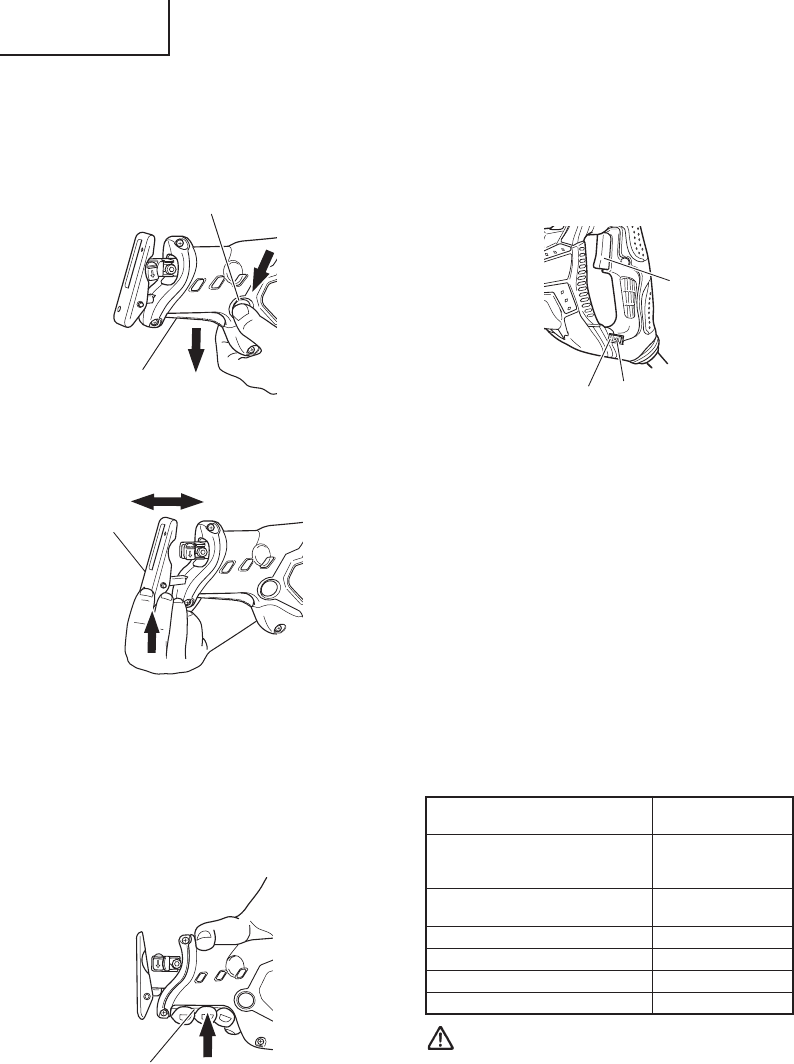
English
12
stages without the use of a wrench or
other tools.
(1) Press a pushbutton. When you do this,
a base lever will jump out to prepare
the base for adjustment (Fig. 12)
(2) Push up the base tip and jog the base
back and forth. (Fig. 13)
(3) You can adjust the base position in
three stages. Move the base at an
interval of about 15 mm, find the
position where the base hooks, and
press in the base lever with your
fingers. The base is secured when
you hear the clicking sound. (Fig. 14)
9. Adjusting the blade reciprocating
speed
This unit has a built-in electronic control
circuit that makes it possible to adjust the
variable speed of the saw blade either
both by pulling a switching trigger or
turning a dial. (Fig. 15)
(1) If you pull the trigger further in, the
speed of the blade accelerates. Begin
cutting at a low speed to ensure the
accuracy of your target cut position.
Once you’ve obtained a sufficient
cutting depth, increase the cutting
speed.
(2) On the dial scale, “5” is the maximum
speed and “1” the minimum. The high
speed is generally suitable for soft
materials such as wood, and the low
speed is suitable for hard materials
such as metal. We recommend that
you use the following as a rough guide
in selecting the suitable speed for the
materials you are cutting.
CAUTION:
⅜ When cutting at low speed (scale of 1 –
2), never cut a wooden board more than
25/64" (10 mm) thick or a mild steel plate
more than 5/64" (2 mm) thick. The load
Push button
Base lever
Fig. 12
Base
Fig. 13
Graduation
Switch
trigger
Dial
Fig. 15
Base lever
Fig. 14
Example of materials Recommended
to be cut dial scale
Mild steel pipes /
cast-iron tubes / 2 – 4
L-shaped angle steel
Wood / wood with nails
driven in
5
Stainless steel 1 – 3
Aluminum / brass / copper 2 – 4
Plaster board 4 – 5
Plastic / fiber board 1 – 3


















